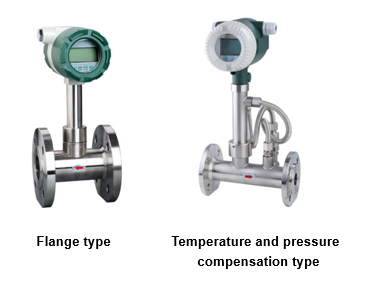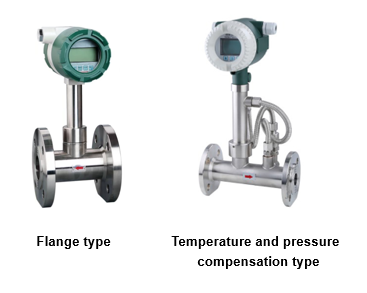
Vortex Flowmeter
PLV-VF81 series vortex flowmeter
Vortex flowmeter is a velocity type flow instrument mainly used for measuring the flow rate of industrial pipeline fluid media, such as gas, liquid, steam and other media.
Its characteristics are small pressure loss, large range of measurement, high accuracy, and almost unaffected by parameters such as fluid density, pressure, temperature, viscosity, etc. when measuring the volumetric flow rate under working conditions. Without movable mechanical parts, it has high reliability, low maintenance, and the instrument constant can be stable for a long time. Among them, the plug-in vortex flowmeter is welded to a base on a large pipeline and equipped with a ball valve, which can be continuously loaded and unloaded for operation in dirty media and regular cleaning and maintenance.
This instrument adopts a piezoelectric stress sensor, which can be used for a long time in the working temperature range of -20 ℃ to+300 ℃. It is widely used in flow measurement and control work in various industries such as petroleum, chemical, metallurgy, pharmaceuticals, and water treatment. The output of this instrument includes both analog standard signals and digital pulse signals, making it easy to use in conjunction with digital systems such as computers. It is a relatively advanced and ideal flow instrument.
Working principle:
When a cylindrical resistance body is vertically inserted into a fluid, vortices are alternately generated on both sides, and as the fluid moves downstream, it is called a Kaman vortex street, as shown in the following figure. The resistance body that generates the vortex street is called the vortex generator body. Experimental results have shown that the frequency of vortices is directly proportional to the flow velocity, which can be expressed as follows:
Specification of vortex flowmeter
Experimental results have shown that when the distance h between two rows of vortices and the distance L between two vortices in the same row satisfy the formula h/L=0.281, the asymmetric vortex train can maintain a stable state. When the Reynolds number Re of the fluid is within the range of 5000-15000, Sr remains basically unchanged. Therefore, when the width d of the vortex generating body and the Strouhal number Sr are constant, the frequency of the vortex generating body is directly proportional to the average flow velocity of the fluid, that is, directly proportional to the flow rate Q and independent of parameters such as pressure, temperature, and density.
When vortices are generated on both sides of the cylinder, the sensor is subjected to an alternating lift force perpendicular to the flow direction, which induces a signal. The frequency of the lift force change is the vortex frequency. The sensor amplifies and shapes the signal to the converter to obtain a pulse signal that is linearly proportional to the flow velocity, which is directly output or converted into a 4-20mA standard signal output. The relationship between flow rate Q and frequency is as follows:
Vortex flowmeter specifications
If there are any other matters not covered, please contact our sales team:
Email: info@plivi.com.cn
Above, thank you for your support!
 021-5775 1707
021-5775 1707














